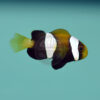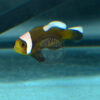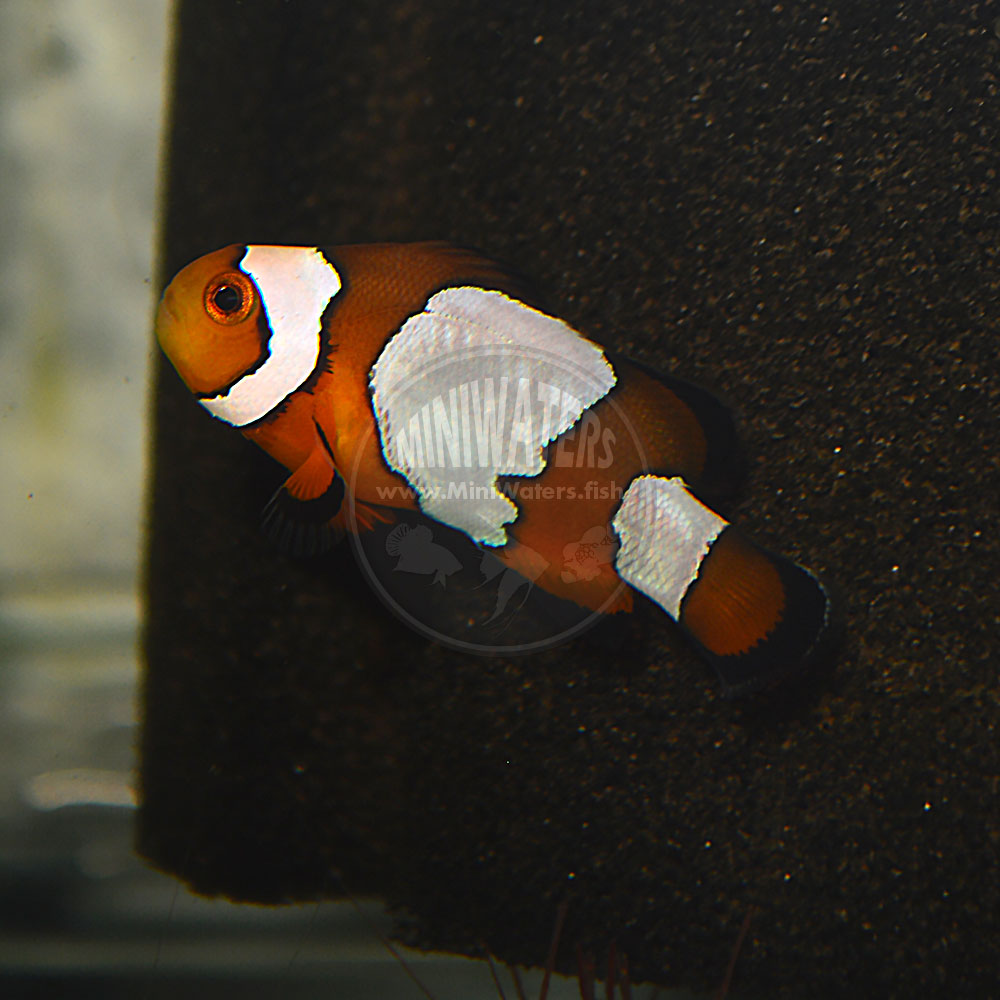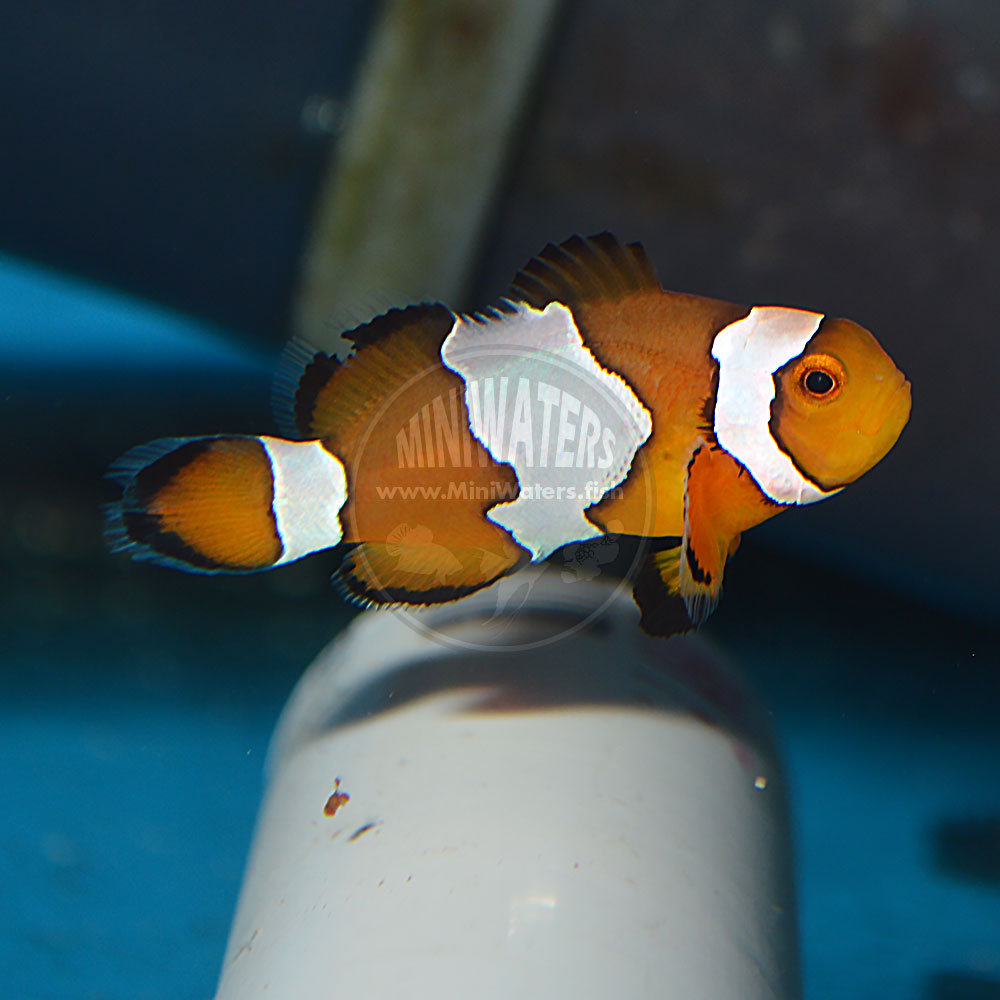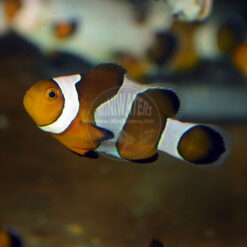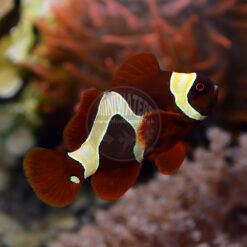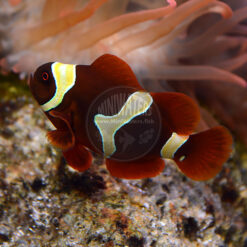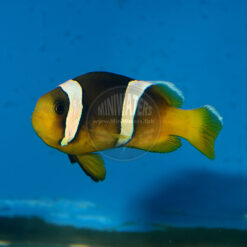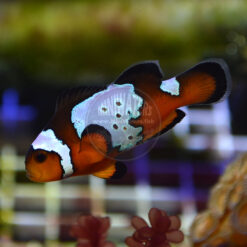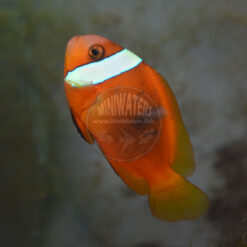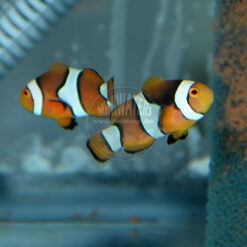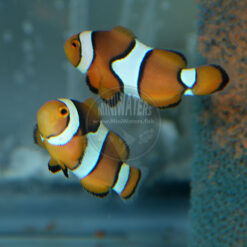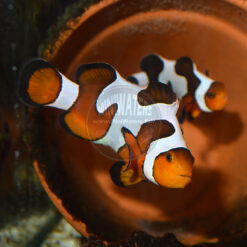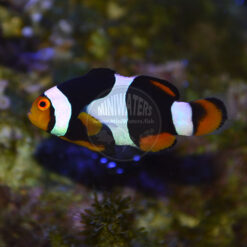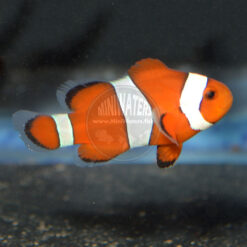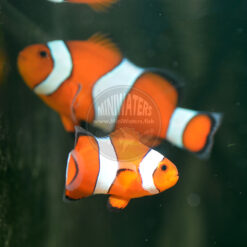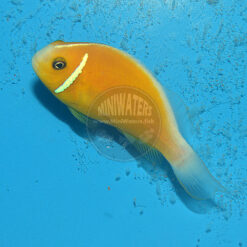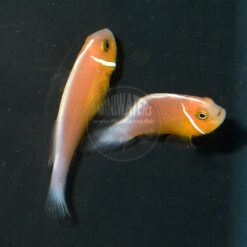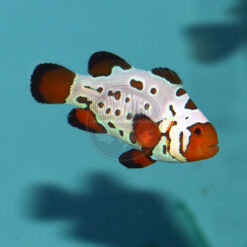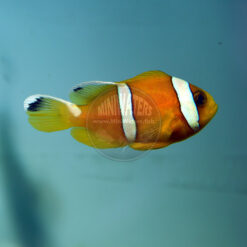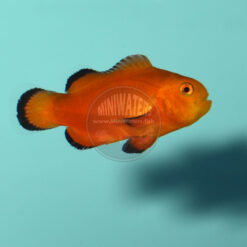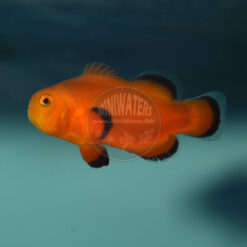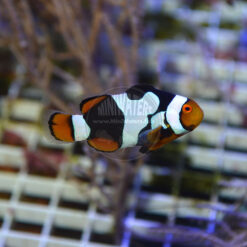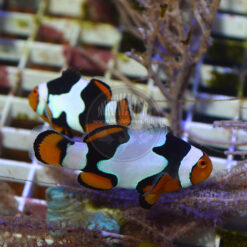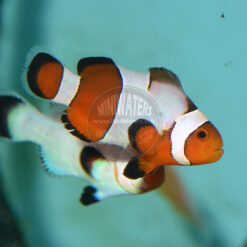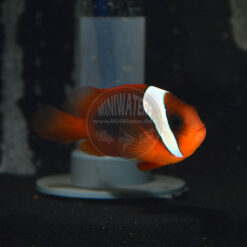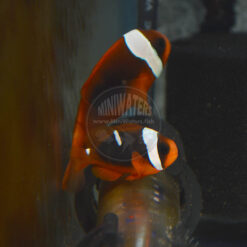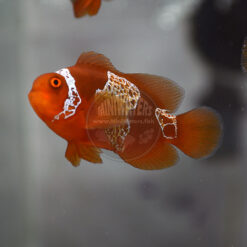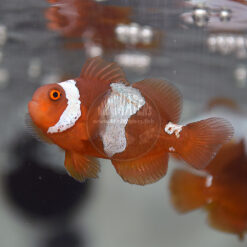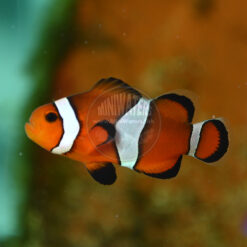Amphiprion ocellaris “Snowflake” Clownfish
$39.00 – $75.00Price range: $39.00 through $75.00
It’s hard to think that the Snowflake Ocellaris Clownfish might well be the very first proven genetic variation of Amphiprion ocellaris. Nevermind that it is already over a decade old, having first shown up in internet archives as early as late 2004. This classic designer clownfish variety was discovered by Tropic Marine Centre in the UK (TMC), purportedly a few offspring from each clutch appeared with this mutation, and from memory, supposedly fewer than 100 original Snowflake clownfish were released. Learn more below:
Description
It’s hard to think that the Snowflake Ocellaris Clownfish might well be the very first proven genetic variation of Amphiprion ocellaris. Nevermind that it is already over a decade old, having first shown up in internet archives as early as late 2004. This classic designer clownfish variety was discovered by Tropic Marine Centre in the UK (TMC), purportedly a few offspring from each clutch appeared with this mutation, and from memory, supposedly fewer than 100 original Snowflake clownfish were released.
Snowflake, as a gene, appears to be a straight dominant mutation, which we’re abbreviating as Sf. So, it’s safe to assume that any fish showing the snowflake phenotype is at least (Sf/+). In an interesting twist, so far I’ve been unable to find anyone who’s produced evidence that there can be homozygous, or “double dose” snowflakes, Sf/Sf. What little data I have suggests that in fact, a double dose of the snowflake gene could, hypothetically, be fatal and thus cause the fish to never be hatched and reared. Of course, this is all conjecture based on not a lot of info, but knowing that some of the more extremely patterned or higher coverage Snowflakes are not necessarily parented by anything “special”, further suggests that these are not indicative of being homozygous specimens, but instead that secondary modifier genes may be at play (or perhaps even rearing conditions).
How ironic that today we’d consider these “nothing fancy”, but 10 years ago you may well have been clawing your friends eyes out to own a pair of these?! For now, regular grade snowflakes will consist that show three well-defined bars. Premium grades will show connections between one or more bars and/or a high percentage of white coverage on the flank.
Additional information
| Scientific Name | Amphiprion ocellaris |
|---|---|
| Captive-Bred | |
| Breeder | Booyah's Reef, Sustainable Aquatics |
| Quality / Grade | Premium, Regular |
| Sizes Available | Small |
| Wholesale Available | Yes |
Related products
Clownfish
Clownfish
Clownfish


